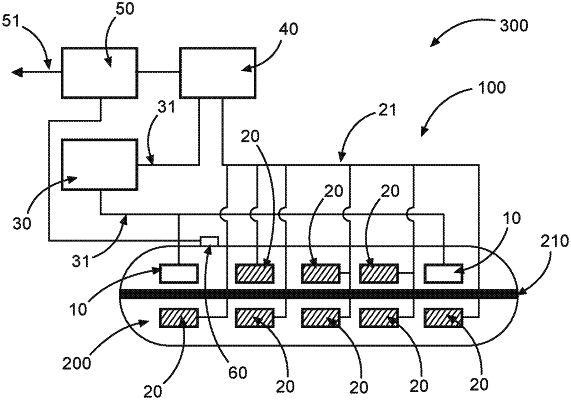| CPC G01F 23/2966 (2013.01) | 17 Claims |

|
1. A filling level monitoring device for monitoring a filling level of a fluid in a container, the filling level monitoring device comprising:
at least one exciter;
at least one sensor;
a signal source that is connected to the at least one exciter and is configured to generate an input signal comprising a multitude of frequency components;
a processor;
at least one spatial orientation and acceleration sensor; and
a filling level indicator;
wherein the at least one spatial orientation and acceleration sensor is connected to the filling level indicator and is configured to measure a spatial orientation of the fluid inside the container;
wherein the at least one sensor is connected to the processor and is configured to detect vibrations at the container and to generate and send a vibration signal, which corresponds to the detected vibrations, to the processor based on the vibrations detected at the container;
wherein the processor is configured to compare the vibration signal to the input signal to extract resonance frequencies;
wherein the filling level indicator is configured to:
receive the extracted resonance frequencies from the processor;
receive a spatial orientation measurement of the fluid inside the container from the at least one spatial orientation and acceleration sensor; and
determine a current filling level of the container based on the extracted resonance frequencies and the spatial orientation of the fluid inside the container.
|